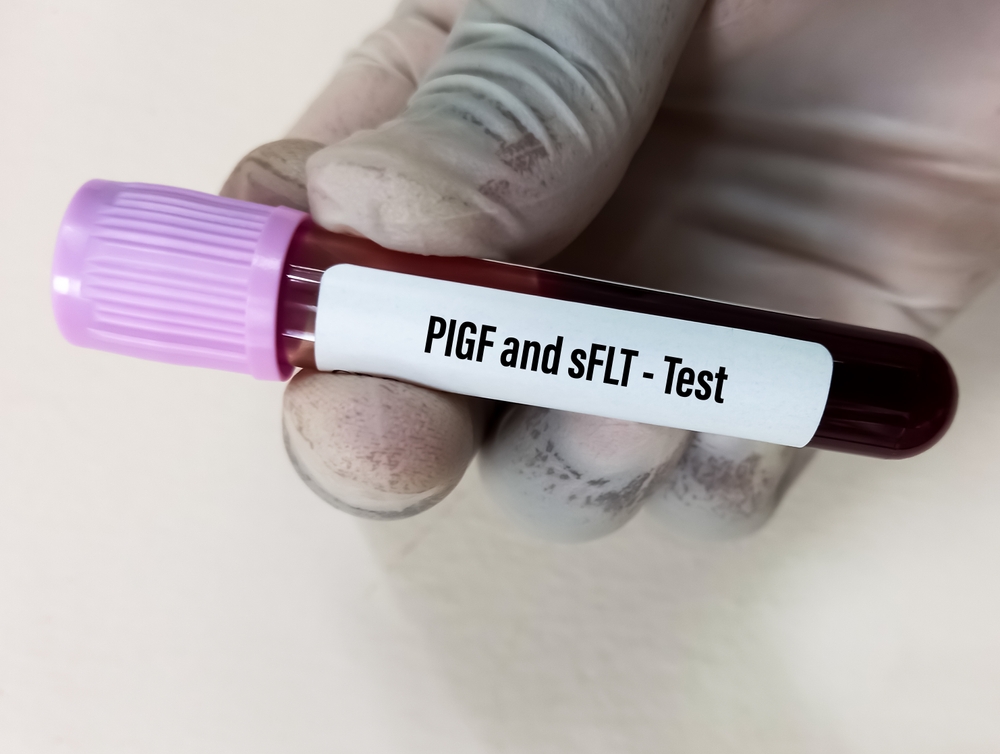The Food and Drug Administration (FDA) has cleared the first blood-based biomarkers assay for risk assessment and clinical management of severe preeclampsia, a leading cause of maternal and fetal mortality and morbidity.
For decades, healthcare providers have typically relied on measuring blood pressure and proteins in urine to determine whether a patient will develop preeclampsia. However, these tests are poor predictors of whether a woman will develop severe preeclampsia, particularly as pregnancy progresses.
This predictive diagnostic tool, newly cleared by the FDA, can now help healthcare providers in the United States predict earlier and more accurately whether a woman will develop severe preeclampsia during pregnancy. The new assays are designed to be used along with other laboratory tests and clinical assessments to aid in the risk assessment of pregnant women who have been hospitalized for hypertensive disorders of pregnancy to determine if they are at risk of progressing to preeclampsia with severe features within the next 2 weeks.
A rising need
Preeclampsia, a hypertensive disorder of pregnancy that affects approximately 5% of all pregnancies, remains one of the leading causes of maternal and neonatal morbidity and mortality in the United States (Ananth CV et al. 2013). The condition occurs in ~1 in 25 pregnancies in the United States, according to the US Centers for Disease Control and Prevention.
Rates of hypertensive disorders of pregnancy in the US have been increasing, largely due to a greater prevalence of obesity and chronic hypertension (Ananth CV et al. 2019). According to the Preeclampsia Foundation, the preeclampsia rate is 60% higher in black women than in white women, and black women are more likely to develop severe preeclampsia.
While preeclampsia is characterized primarily by high blood pressure, other signs include elevated amounts of protein in the urine and organ damage. Although some women experience no symptoms, it is a common cause for maternal and fetal complications as well as preterm delivery.
As of now, there is no specific diagnostic test for preeclampsia. The current standard of care relies on measures of blood pressure and proteins detected in a urine sample, among other factors, to detect high-risk cases. These patients are typically then hospitalized, sometimes for weeks, until it’s safe to perform an early delivery. If the baby is too young to survive outside of the womb, healthcare providers attempt to manage preeclampsia with antihypertensive medications, magnesium, and steroids.
Being able to stratify patients by their individual severity level could help hospitals better prioritize treatment for patients most in need.
A ratio of predictive proteins
This first-of-its-kind prognostic immunoassays test for novel biomarkers in the blood, each measuring a placenta-related protein: soluble fms-like tyrosine kinase-1 (sFlt-1) and placental growth factor (PlGF)—2 proteins which predict poor outcomes from preeclampsia with substantially better accuracy than current methods. Assay results are presented as a ratio of both biomarkers.
The FDA nod came after Thermo Fisher Scientific submitted results of its PRAECIS study of the test which included more than 700 pregnant women hospitalized with hypertensive disorder presenting between 23 and 35 weeks of gestation. Results showed that women with a ratio serum of sFlt-1 to PlGF of at least 40 were at higher risk for adverse maternal outcomes compared with those with a ratio less than 40 (16.1% vs 2.8%; relative risk, 5.8; 95% CI, 2.8–12.2).
The sFlt-1/PlGF ratio was proven to have a sensitivity of 94% and specificity of 75%. In a head-to-head comparison of their accuracy versus that of standard screening measures, the biomarker tests registered an area under the curve (AUC) of 0.92, while the standard methods registered an AUC of 0.75. Traditional screening methods for the condition may detect fewer than 50% of all high-risk cases, according to an analysis published last year, and even the “gold standard” 24-hour urine protein test carries a sensitivity of just about 80% (Malone SL, et al. 2022).
The test can be used between 23 and 35 weeks of pregnancy to predict development of severe preeclampsia among women who have symptoms of, or have been diagnosed with, hypertension during pregnancy.
Women who test positive, based on the risk stratification ratio of the 2 assays (sFlt-1/PlGF ratio ≥ 40), could receive enhanced surveillance and accelerated care before severe features develop. For women who test negative and are deemed to be at low risk, the test could mean shorter hospital stays and fewer, if any, steroid treatments.
The positives of prediction
“Patients and providers will benefit from having better tests to predict progression to preeclampsia with severe features, especially for those patients at risk of severe, early-onset disease or for whom there is some diagnostic uncertainty,” stated Eleni Tsigas, CEO of the Preeclampsia Foundation, said in an announcement from Thermo Fisher.
“FDA clearance and availability of these novel biomarker tests throughout the country will allow caregivers to better manage and potentially improve outcomes for both mothers and their newborns,” Ravi Thadhani, MD, co-author of the PRAECIS study and executive VP of health affairs at Emory University, added in the announcement.
The contents of this feature are not provided or reviewed by NPWH.

